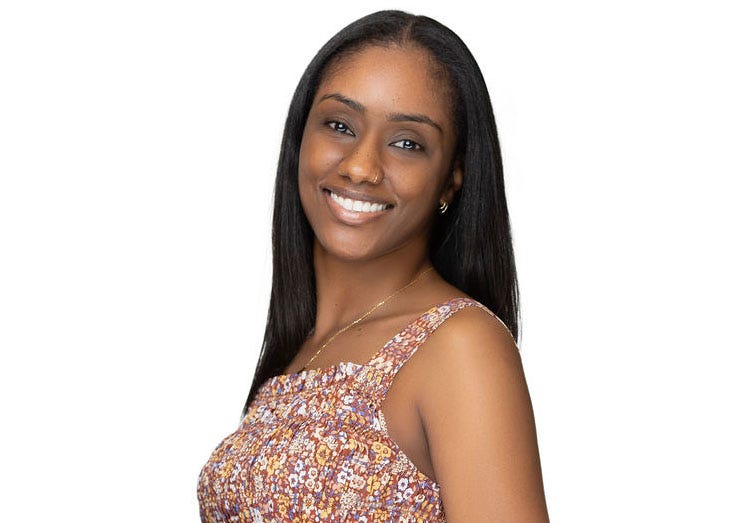Committing to creating change
When Ashley Anthony became a manager two years ago, she knew she wanted to do things differently.
In the past, she’d seen managers who were not as supportive, forthcoming or transparent as they could be. Instead, she viewed her role as providing guidance through partnership with her “managees.”
In the last several weeks of this newsletter, we’ve explored what actions we can take when faced with the “broken rung” to management; how to confront obstacles; and how, given time, together we can shift the career landscape as indelibly as the Grand Canyon. Anthony’s story illustrates what this looks like in action.
Addressing the ‘broken rung’
Anthony is a product design manager at mRelief, a nonprofit dedicated to providing a dignified experience when applying for social services. She didn’t always expect to work in management, and started out with a very different idea of what success would mean.
“In that design career path, the holy grail was advertising and becoming a creative director, and all of the glamor and the glitz of being within that world,” she said.
As she discovered UX within the civic tech space, it connected with her interest in making information accessible that could change the world for the better. Still, as she set out on a more fulfilling professional journey, she was thinking about how to make the changes and not necessarily becoming a leader.
Over time, though, she started to wonder why she didn’t see more people who looked like her in predominantly white spaces and considered how she could participate in making a change. At mRelief, Anthony said she’s been given the space and support to intentionally think about what management looks like for her.
“I don’t have to push myself in ways that don’t feel authentic to me,” Anthony said.
Eroding barriers, shifting the landscape
Although she wouldn’t describe herself as breaking down barriers, Anthony does hope that people who see her in this role will feel empowered to pursue their own ambitions. When you’re starting out, it’s hard to build your self-confidence if your peers don’t look like you or share your cultural background, Anthony said. She’s not going along just to get along, instead challenging herself and those around her to reimagine how equity and inclusion can go beyond discussions and hiring.
“Your demographic sheet can look one way, but at the end of the day that really doesn’t matter if people do not feel like they’re in a safe space to show up as their full selves without some kind of judgment or feeling like they’re being silenced,” Anthony said.
The very first step, Anthony said, is unlearning – sift through what you think you know, commit to your values and see how they can contribute to the type of work environment you want to see. She also encourages people to initiate conversations with colleagues about what changes are needed, using invitation, not confrontation, in your approach.
Start with someone you share values with, she said, and see if you can grow from there.
“We have to keep revisiting it, we have to keep chipping away at it,” Anthony said. “It’s an ongoing project. It’s a community project too.”
Happy navigating,
Bridget
Recommendations from Ashley Anthony:
Inclusion management consulting: Engage Between
Decolonizing: The Body Is Not an Apology by Sonya Renee Taylor and All About Love by bell hooks
History: Sapiens: A Brief History of Humankind by Yuval Noah Harari
Design: The Design of Everyday Things by Don Norman. Anthony saw an interview where Norman discussed the importance of learning history, and as she said, how “it can encourage you to see the possibilities of change … Throughout human history, we have changed, we have shifted, and we can do that again.”




